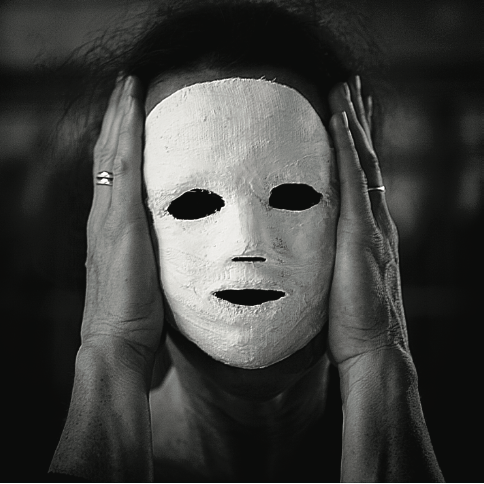36.3: The Cognitive Neuroscience Of Schizophrenia
- Page ID
- 77102
As described above, when we think of the core symptoms of psychotic disorders such as schizophrenia, we think of people who hear voices, see visions, and have false beliefs about reality (i.e., delusions). However, problems in cognitive function are also a critical aspect of psychotic disorders and of schizophrenia in particular. This emphasis on cognition in schizophrenia is in part due to the growing body of research suggesting that cognitive problems in schizophrenia are a major source of disability and loss of functional capacity (Green, 2006; Nuechterlein et al., 2011). The cognitive deficits that are present in schizophrenia are widespread and can include problems with episodic memory (the ability to learn and retrieve new information or episodes in one’s life), working memory (the ability to maintain information over a short period of time, such as 30 seconds), and other tasks that require one to “control” or regulate one’s behavior (Barch & Ceaser, 2012; Bora et al., 2009a; Fioravanti et al., 2005; Forbes et al., 2009; Mesholam-Gately et al., 2009). Individuals with schizophrenia also have difficulty with what is referred to as “processing speed” and are frequently slower than healthy individuals on almost all tasks. Importantly, these cognitive deficits are present prior to the onset of the illness (Fusar-Poli et al., 2007) and are also present, albeit in a milder form, in the first-degree relatives of people with schizophrenia (Snitz et al., 2006). This suggests that cognitive impairments in schizophrenia reflect part of the risk for the development of psychosis, rather than being an outcome of developing psychosis. Furthermore, people with schizophrenia who have more severe cognitive problems also tend to have more severe negative symptoms and more disorganized speech and behavior (Barch et al., 1999, 2003; de Gracia Dominguez et al., 2009; Ventura et al., 2009, 2010). In addition, people with more cognitive problems have worse function in everyday life (Bowie et al., 2006, 2008; Fett et al., 2011).

Some people with schizophrenia also show deficits in what is referred to as social cognition, though it is not clear whether such problems are separate from the cognitive problems described above or the result of them (Hoe et al., 2012; Kerr & Neale, 1993; van Hooren et al., 2008). This includes problems with the recognition of emotional expressions on the faces of other individuals (Kohler et al., 2010) and problems inferring the intentions of other people (theory of mind) (Bora et al., 2009b).
Individuals with schizophrenia who have more problems with social cognition also tend to have more negative and disorganized symptoms (Ventura et al., 2011), as well as worse community function (Fett et al., 2011).
The advent of neuroimaging techniques such as structural and functional magnetic resonance imaging and positron emission tomography opened up the ability to try to understand the brain mechanisms of the symptoms of schizophrenia as well as the cognitive impairments found in psychosis. For example, a number of studies have suggested that delusions in psychosis may be associated with problems in “salience” detection mechanisms supported by the ventral striatum (Jensen & Kapur, 2009; Jensen et al., 2008; Kapur, 2003, Kapur et al., 2005; Murray et al., 2008) and the anterior prefrontal cortex (Corlett, Honey, et al., 2006; Corlett, Honey, & Fletcher, 2007; Corlett, Murray, et al., 2007). These are regions of the brain that normally increase their activity when something important (aka “salient”) happens in the environment. If these brain regions misfire, it may lead individuals with psychosis to mistakenly attribute importance to irrelevant or unconnected events. Furthermore, there is good evidence that problems in working memory and cognitive control in schizophrenia are related to problems in the function of a region of the brain called the dorsolateral prefrontal cortex (DLPFC) (Minzenberg et al., 2009; Ragland et al., 2009). These problems include changes in how the DLPFC works when people are doing working-memory or cognitive-control tasks, and how this brain region is connected to other brain regions important for working memory and cognitive control, including the posterior parietal cortex (e.g., Karlsgodt et al., 2008; Kim et al., 2003; Schlösser et al., 2003), the anterior cingulate (Repovš & Barch, 2012), and temporal cortex (e.g., Fletcher et al., 1995; Meyer-Lindenberg et al., 2001). In terms of understanding episodic memory problems in schizophrenia, many researchers have focused on medial temporal lobe deficits, with a specific focus on the hippocampus (e.g., Heckers & Konradi, 2010). This is because there is much data from humans and animals showing that the hippocampus is important for the creation of new memories (Squire, 1992). However, it has become increasingly clear that problems with the DLPFC also make important contributions to episodic memory deficits in schizophrenia (Ragland et al., 2009), probably because this part of the brain is important for controlling our use of memory.
In addition to problems with regions such as the DLFPC and medial temporal lobes in schizophrenia described above, magnitude resonance neuroimaging studies have also identified changes in cellular architecture, white matter connectivity, and gray matter volume in a variety of regions that include the prefrontal and temporal cortices (Bora et al., 2011). People with schizophrenia also show reduced overall brain volume, and reductions in brain volume as people get older may be larger in those with schizophrenia than in healthy people (Olabi et al., 2011). Taking antipsychotic medications or taking drugs such as marijuana, alcohol, and tobacco may cause some of these structural changes. However, these structural changes are not completely explained by medications or sub- stance use alone. Furthermore, both functional and structural brain changes are seen, again to a milder degree, in the first-degree relatives of people with schizophrenia (Boos et al., 2007; Brans et al., 2008; Fusar-Poli et al., 2007; MacDonald et al., 2009). This again suggests that neural changes associated with schizophrenia are related to a genetic risk for this illness.

